Support Village Voice News With a Donation of Your Choice.
When both the PPP in 2011 and the PNC in 2015 had the opportunity to try and develop a more cooperative political environment they deliberately did not do so, preferring instead to continue the ethnic tug-of-war as if Guyana’s history and what has taken place elsewhere, were not sufficient indications of the destructive nature of that path.
Driving home last Thursday evening, I heard a PPP/C spokesperson, in the National Assembly, it was the Hon. Bishop Juan Edghill I believe, waxing lyrical, like many before him on both sides of the House, about the many achievements of the previous and present PPP/C’s governments, and I wondered if he ever asked himself why, despite its relatively abundant natural endowments, Guyana is till classed among the poorest countries in the hemisphere, and is poised once again to squander the extant opportunities by helping to pollute and make the world unlivable in.
The normal partisan retort would be that it is the other side that has been destructive, but even if this is true, it perhaps makes one only marginally less responsible for the historic loss of opportunities.
The PPP and PNC have been going at this for decades and governance presupposes the creation of positive enduring relationships and products, and it must be a failure of proper governance if most of what you have built has disappeared. After all, democracy presupposes – indeed requires – periodic changes of government, and it would be foolhardy and downright irresponsible to build what only your side can, or is willing, to sustain.
Yet Guyanese politics is replete with such efforts: last Thursday the government announced a raft of measures having to do with the distinguished Walter Rodney without the public being aware of an effort, matters not how futile, having being made to have some cooperative agreement across the political spectrum. As we shall see below, the PPP is becoming more and more dependent on the votes of other ethnicities and so it might still be deluding itself that it alone will be able to breach the ethnic divide by actions that can be easily portrayed as self-serving maneuvers. But then again, on this vital issue of cooperation matters have already taken a turn for the worse: the opposition does not believe that the government is legitimate and the government has decided to have only a minimal relationship with it.
Yet all is not lost. Demographic developments have come to the rescue but also need to be rescued. They explain and the last three general elections confirm that both the PNC and PPP are now minority parties with the tide running against the PPP. Briefly, the political system has so developed that Indians are about 39.8% of the population, Africans 29.3%, Mixed persons 19.9%, Amerindians 10.5% and others .5%. The Indian and African populations vote relatively solidly for the PPP and PNC, with the former taking the majority of the Amerindian and the latter most of the mixed votes. This takes both parties close together to mid/higher 40 percentile of the popular vote. The Alliance for Change tends to skim votes from both parties, particularly when they are weak, and in the current ethnic context the Amerindian party has the best growth possibilities if it has not already made itself indistinguishable from the PPP. Bolstered, by electoral reforms, this scenario could lead to quite interesting outcomes. For example, I will easily give the PNC 75% of the Mixed votes and the Amerindian party might be able to negotiate for the presidency. This is the kind of configuration around which parties will have to develop their electoral vision, but it needs to be protected from the kind of elections manipulation such as that which took place during the 2020 elections.
I have spent considerable time quarrelling for shared governance as the optimal political solution to Guyana’s ethnic problem. I recognise the shortcomings of the above mentioned development for we have already lived in a context where a relatively minor party, the Alliance for Change, joined with the PNC and kept the leadership of the larger ethnic Indian population from government for what could have been long time. This would not only have reversed the positive effects of the demographic developments, but a country’s future should be set upon a more cooperative path if development is to be sustainable and aggregative. The present trend can, however, be considered progressive, particularly if coupled with directly elected constituencies, an open proportional representation system, stronger local government, post elections coalitions, etc. to encourage more cooperation and discourse and possible frequent party/government turnover.

















